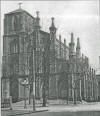|
Sylvester Horton Rosecrans |
||||||||||||||
|
The fifth and youngest son of Crandall and Jemima (Hopkins)
Rosecrans was Sylvester Horton born in 1827 in Homer, Ohio.
Sylvester's and William's youth were closely linked as the oldest surviving son and the youngest. Both men were brilliant and excelled at their studies. Playtime as children involved soldiers and railroads - both were careers William chose to follow. While he was at West Point, William made friends with an Irish book peddler who changed the lives of all Crandall's sons. Not only had the peddler told William about Catholicism, he got John Milner's The End of Religious Controversy for him to read. For William this was an eye opener and he converted to the Roman Catholic Church and sent a copy of the book to Sylvester. Sylvester was attending Kenyon College, an Episcopalian college in Gambier, Ohio. A Kenyon archivist claimed Sylvester was the top in his class. He had completer his first three years when he went to visit his brother who was teaching at West Point. While they were riding, they passed a Catholic Church and William said, "It is high time, Sylvester, for you to put an end to this procrastination of yours; come in here and get baptized." Sylvester was baptized on May 10, 1845 at Cold Spring, on the north river opposite West Point. His godparents were William and Anne Rosecrans. |
||||||||||||||
Many year later William remembered the event in a letter to a priest he meant when visiting Bishop Rosecrans in Columbus, Ohio. |
||||||||||||||
|
Dec. 11,
1886 Dear Father Mulhane: Bishop Rosecrans was baptized at Cold Spring on the North River opposite West Point, N.Y, by the Rev. Dr. Villani, pastor of the Catholic Church at that place, and in charge of the station at the Post of West Point, in the summer of 1846. I was his godfather and my wife his godmother. I do not remember whether it was sub conditione. My baptism in 1841 was sub conditione, because it was a vague tradition that in my early infancy a Protestant or Wesleyan Methodist minister at my grandmother's instance had baptized me, following the traditional ritual of the church of England in so doing. Yours most truly, W S. Rosecrans |
||||||||||||||
|
Upon returning home, Sylvester continued to study his new religion. The closest Catholic Church was St. Vincent de Paul Parish in Mt. Vernon so Sylvester had to walk 8 miles to services. Often he fasted during the walk so he could partake of holy communion. A turn of the century postcard shows what the church looked like then. |
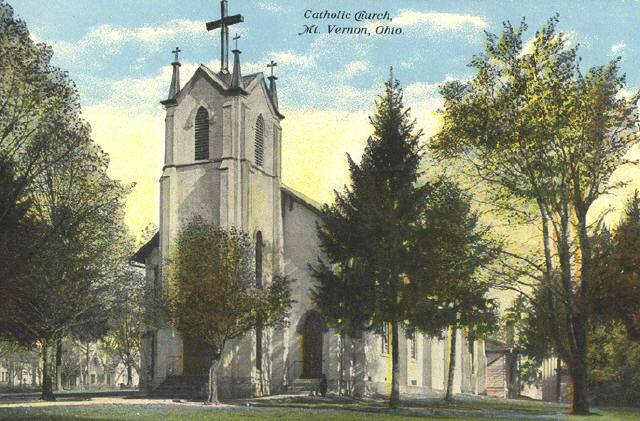 |
|||||||||||||
| In the fall, Sylvester transferred to St. John's College in Fordham, New York. Here he continued to study his new faith while completing his undergraduate course work. He graduated with honors in 1846 with the desire to be a priest. | postcard of St.
Vincent de Paul Church |
|||||||||||||
|
According to Donald Schlegel, Illustrated History of the Diocese of Columbus, Bishop Purcell sent him to the College of the Propaganda in Rome. On December 10, 1847, Bishop John Baptist Purcell of Cincinnati wrote to Bishop Anthony Blanc of New Orleans, Louisiana and ask him to pay passage of Sylvester H. Rosecrans on board the vessel Marseilies or Leghorn. He has given other traveling money. If the bishop should be absent Father (Constantine) Maenhaut or Joseph Elder will do Purcell this favor. |
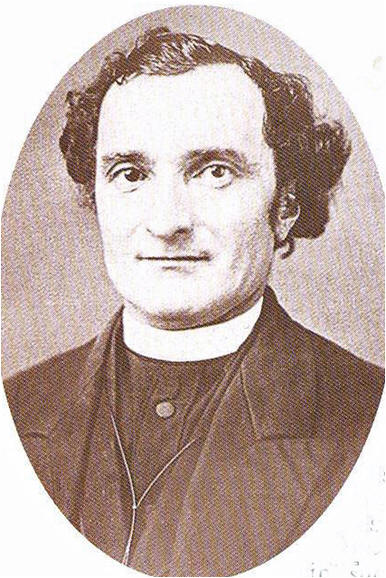 |
|||||||||||||
|
He graduated with a Doctorate in Theology in Rome and was ordained in June 5, 1852. After traveling around Europe, Father Rosecrans
was assigned to St. Thomas Church in Cincinnati, Ohio. Purcell
opened a new college Mount St. Mary's in the city
and Father Rosecrans became the
head of school. |
||||||||||||||
|
During this time, his brother William's family was living next door so Sylvester always tried to find time to visit the family. He often became the male authority figure when his brother was absent on business. He encouraged the children to read the classics and brought books to them. Because of Sylvester's administrative skill,
Bishop Purcell saw that he was appointed Auxiliary Bishop of Cincinnati in
1862. He was the first person in the Unites States to hold
this post. He continued teaching with his other duties. With the outbreak of the war, the young Auxiliary Bishop drew much criticism for his bold patriotism and support of the Union troops. He often visited his brother in the military camps and prayed with his soldiers. |
||||||||||||||
|
|
||||||||||||||
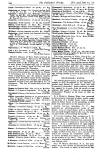 |
Before long he was writing for the
Catholic Telegraph. In 1866 he published a book, The
Divinity of Christ: Together with Thoughts on the Passion of
Jesus Christ. The book is near the top of the right column
in this version of
Publishers' Weekly. Also in 1866, at the Second Plenary Council in Baltimore it was decided to establish the Diocese of Columbus. Rosecrans was assigned as pastor of St. Patrick's Church on North Grant Avenue in Columbus in 1867. |
|||||||||||||
| Pope Pius IX named Auxiliary Bishop
Rosecrans the first Bishop of the Columbus Diocese in 1868. Schlegel
in his book,
Illustrated
History of the Diocese of Columbus, goes into detail on the
rise of the Columbus Diocese.
The accounting given to the next Bishop sheds some light on how Rosecrans struggled to pay the bills in the new diocese. |
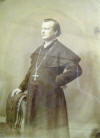 |
|||||||||||||
|
One of the priests Father Rosecrans ordained in 1870 was Father John Joseph Jessing, a German born son of a shoemaker. Jessing's first church was in Pomoroy, Ohio where he started an orphanage supported by the his German language newspaper, Ohio Orphan's Friend. In 1877 he wrote to Bishop Sylvester Rosecrans seeking permission to move his orphanage and newspaper to Columbus. It was granted. Father Jessing started many trades opportunities so the boys could learn a trade and become self-sufficient. One was Josephinum Church Furniture Company. Eventually in 1888, ten years after Rosecrans death, Jessing started the Collegium Josephinum or Josephinum College which was the origin for the Pontifical College Josephinum. Had Bishop Rosecrans not had faith in Jessing this college would not have existed. Father Jessing had the foresight to ask Rome to put the school under the See of Rome, Pope Leo VIII granted the requests thus it is the only Pontifical Seminary outside of Rome. |
||||||||||||||
|
Meanwhile the new See needed a cathedral so Bishop Rosecrans started on the project. When it became time for the building of a cathedral, Bishop Rosecrans turned to his brother's architect skills to make the church plans work as a cathedral. From the groundbreaking of St. Joseph's Cathedral in 1868 until its dedication in 1878 he was constantly seeking funds to complete the construction while leading his congregation and the fast growing Diocese. |
e
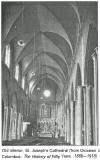 |
|||||||||||||
|
All of this took a toll on his health. On the day of great
joy, the dedication of St. Joseph's Cathedral, October 21, 1878,
Bishop Rosecrans suffered a spell of hemorrhages which took a half
gallon of blood from his lungs. He had lived a life of
austerity and left two silver half-dollars and a
watch. "Give
the watch to my brother. I am ready, Jesus, Mary and Joseph."
His
will had been written
in 1870. |
||||||||||||||
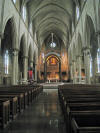 |
A visit to St. Joseph's Cathedral in 2010 found the building had undergone at least two major renovations and several smaller ones. The crypt can be seen with special permission |
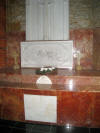 |
 |
|||||||||||
|
2010 |
Bishop Rosecrans' final resting place |
|||||||||||||
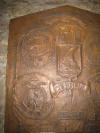 |
 |
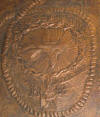 |
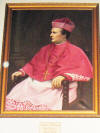 |
Bishop Sylvester Horton Rosecrans |
||||||||||
|
1957 Copper Plaque in the crypt honors Bishops |
||||||||||||||
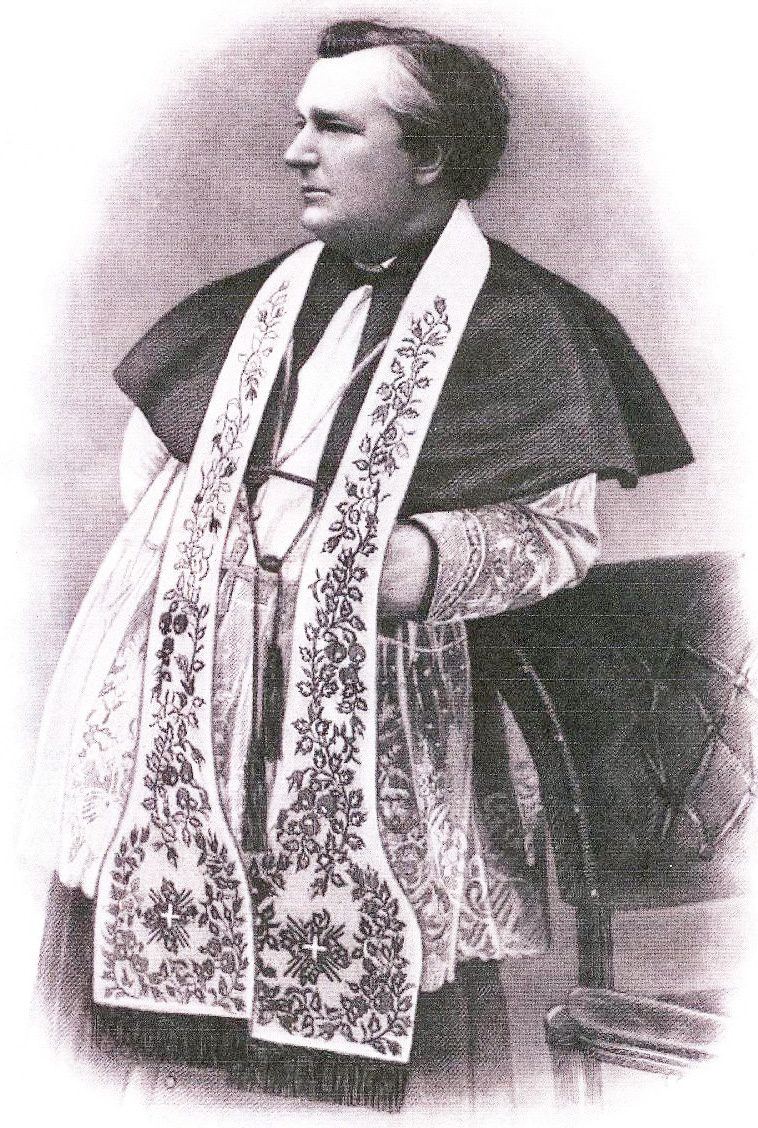 |
||||||||||||||
|
Bishop Sylvester Rosecrans |
||||||||||||||
| For General Rosecrans the loss was severe. He lost his son, Father Adrian to malaria in 1875, his daughter Sister St. Charlene (Mary Louise) to tuberculosis in 1877 and now his brother in 1878. | ||||||||||||||
|
The brothers, Sylvester and
William, were listed in |
||||||||||||||
|
Ohio Historical Society
Plaque |
 |
|||||||||||||
Return to Part 1, Genealogy and Youth Return to Part 2, West Point, Marriage, Corps of Engineers Return to Part 3, Civilian Life, Engineer, Inventor Return to Part 4, Civil War Return to Part 5, Post Civil War Civilian Life |
(11/30/2010) |
|||||||||||||
